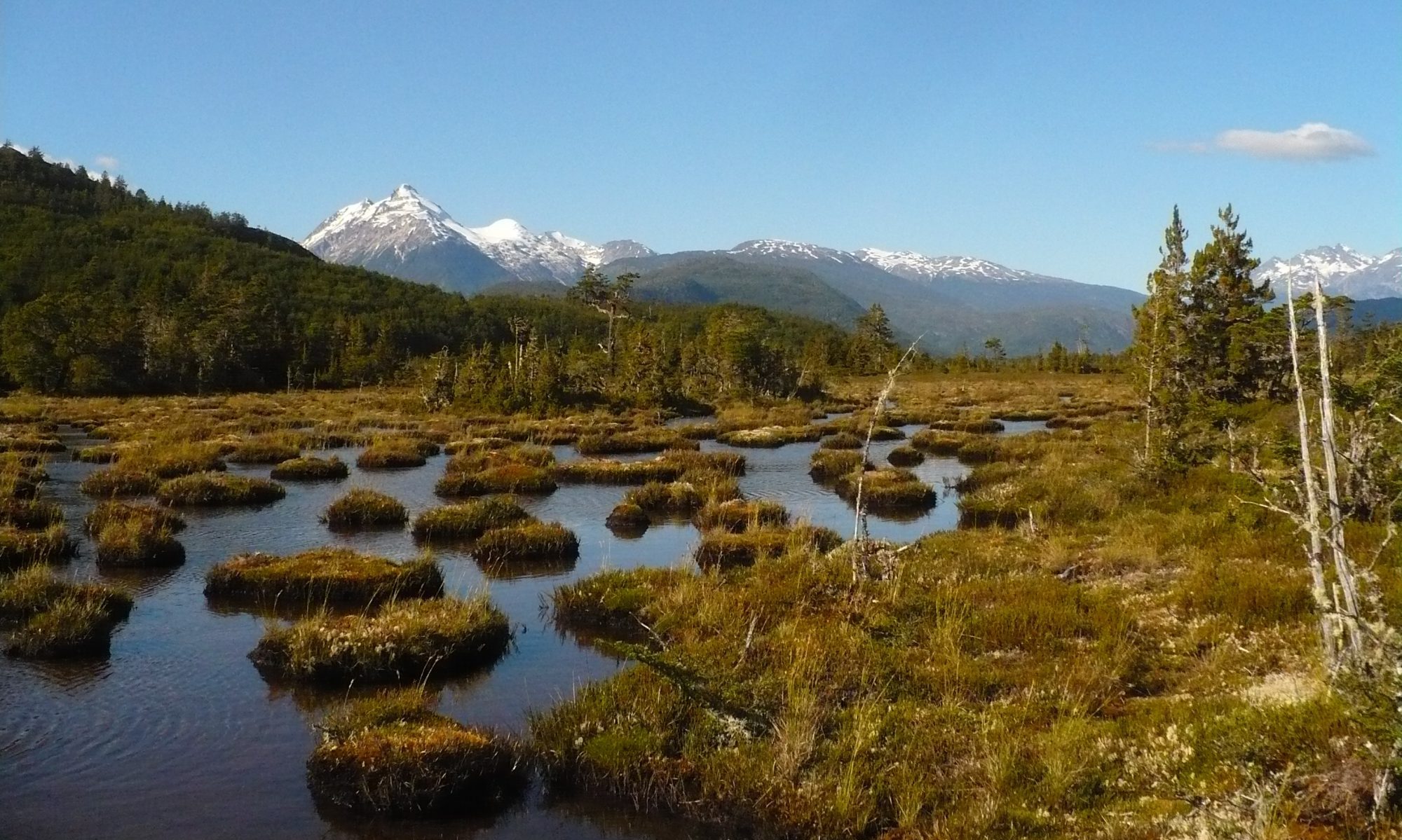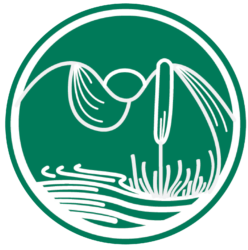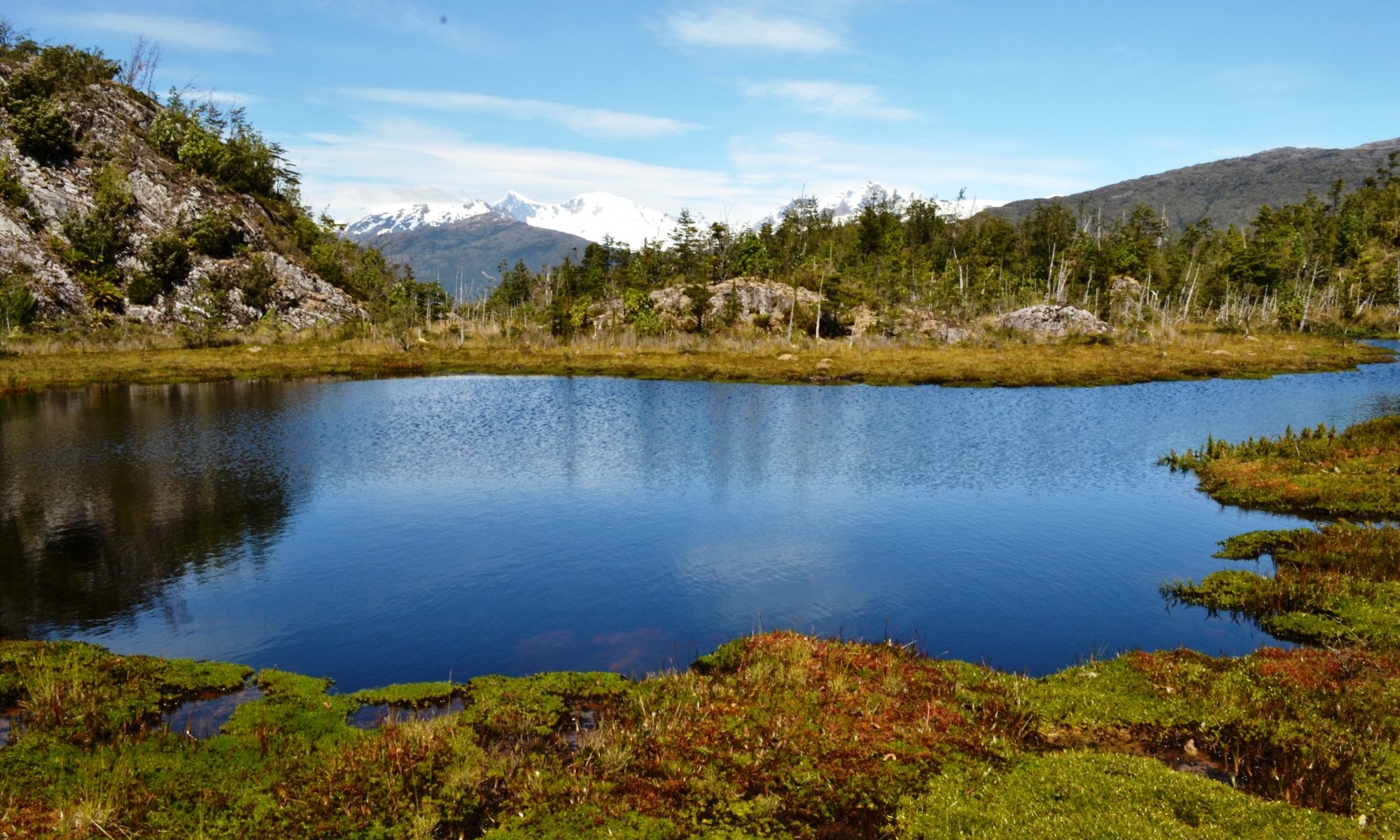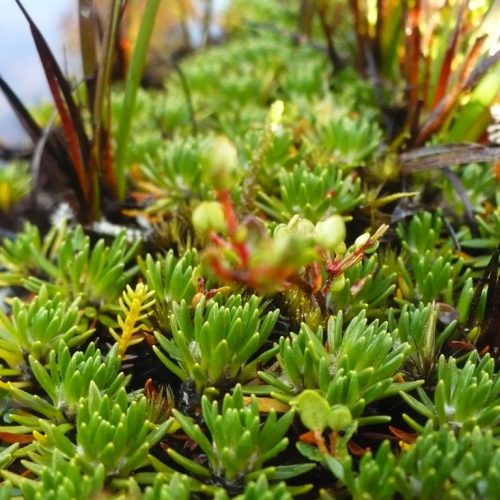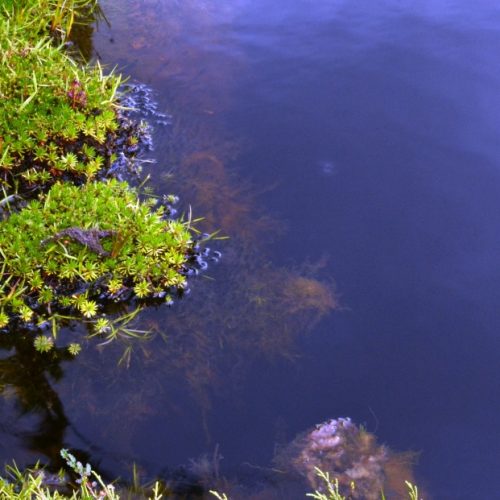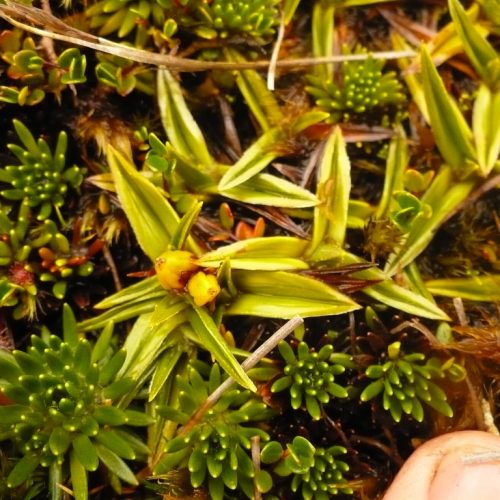Terrestrialization mires are widely reported in the literature (Succow und Jeschke, 1986; Schumann and Joosten, 2008; Grootjans et al., 2010; Zhang et al., 2012) and due to their geogenic origin they are classified as primary mires. In the Chilean Patagonia, dominates a current ombrogenic stage in mires originated by terrestrialization. Because of this, we called them “Terrestrialization bogs”. These are the typical mountainous ecosystem of the Region Aysén, which have originated from pieces of ice left over from the last glacial retreat that anchored in low-alpine areas near the coast during the last glacial retreat. These anchored ice pieces melted and formed small lagoons. As in all standing waters, some organic and mineral materials turned into sediment at the bottom, forming a substrate known as organic gyttja. Over time, the organic gyttja accumulates and slowly replaces the volume occupied by the water, forming a new and vertically growing horizon. Additionally, organic materials are contributed laterally by the vegetation growing on the shore or floating in the water body and decaying onto the horizon. In this way, mires become terrestrialized from the shore to the centre by substrates formed by the shore vegetation; and from the centre to the shore by substrates formed by the floating vegetation. Once the soil of the system emerges, and semi-aquatic vegetation dominates the system, the terrestrial formation of peat engulfs the aquatic formation of organic gyttja until the remnant lagoon disappears. A central remnant lagoon and floating mats of vegetation can be found on terrestrialization bogs. The high precipitation rates of the maritime areas in Aysén (e.g. 2700 to 3300 mm yr-1 are reported by the DGA in the mouths of the Pascua and Baker Rivers respectively) favour the formation of typical raised bog vegetation in these mires, presenting a domed morphology. That is to say their bog condition is a successional stage after the terrestrialization, under which the influence of rainwater surmounts that of the mire water level and of the central remnant lagoon.
Current vegetation
Terrestrialization bogs are characterized by a vegetation gradient starting with the domination of Cyperaceae (C. magellanica) and Juncaginaceae species (T. magellanicum) in the less saturated edges of the mire. The gradient continues into the centre with hummocks of Sp. magellanicum mosses, and ends in blankets of A. pumila and D. fascicularis which turn into floating mats confined in the remnant water. In terrestrialization bogs, similar to that reported for mires in Magallanes and Tierra del Fuego (Kleinebecker, 2007; Abel, 2009; Teltewskaja, 2010; Grootjans et al., 2010), where A. pumila grows above Sp. magellanicum mosses, this plant replaces them and forms the most actual vegetation.
Hydrology
A small central lake is the distinctive hydrological component of terrestrialization bogs. However, these mires in their current bog phase are for the most part more influenced by rainfall, even though it is alltogether correct to speak of mixed water sources. Due to its mountainous location, they may also receive lateral inputs from the surrounding relief. The mire water table observed for the terrestrialization bogs of Aysén was of 15±16 cmbs, without variations over the domed mire level and across to the central remaining lake. A simplified and stereotypical schema of a Terrestrialization Bog is shown as follows:
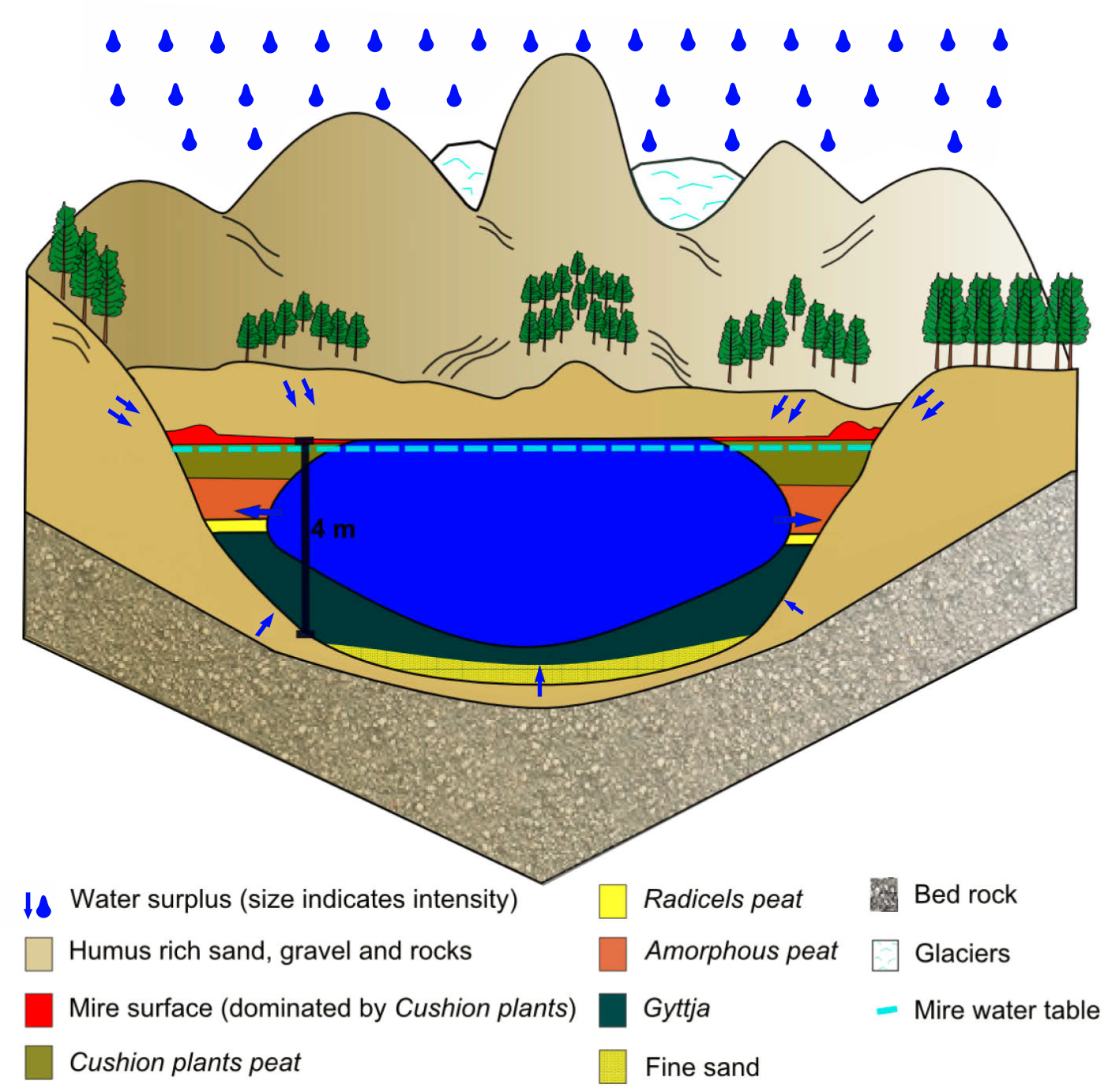
Substrate Types and Stratigraphy
These ecosystems can reach over 300 cm depth, presenting typical ombrogenic peat horizons of cushion plants peat, above amorphous peat over an horizon of organic gyttja, all over coarse to fine sands. Terrestrialization bogs are less prone to floods, percolations and runoffs, presenting homogeneous horizons and little substrate variation, with degrees of decomposition varying from H3 to H8 in the non-amorphous material. Peat accumulation occurs in large horizons along the mire. The most characteristic substrate of terrestrialization bogs is organic gyttja, which forms from organic supplies decanting at the bottom of still water bodies. Apart from the organic gyttja, ombrogenic and geogenic peat types can also be found in terrestrialization bogs. Among the ombrogenic peats, the most common, are cushion plants peat, Sphagnum magellanicum peat and Ericaceae peat. The most common geogenic peat type is radicels peat. It is difficult to define if the amorphous peat in terrestrialization bogs was originated due to the root system of Astelia pumila (cushion plant dominating these sites), or due to fluctuations in the mire water level. Terrestrialization bogs show a wide presence of cushion plants peat in their upper horizons, while underneath there are ample horizons of amorphous peat and marginal deposits of Ericaceae peat, radicels peat and Sphagnum peat, most of them mixed with each other or enclosed in the amorphous peat material. Although A. pumila is the main species in terrestrialization bogs, these isolated plant remains in the deeper horizons suggest that the preceding terrestrialization of these sites were dominated by species other than A. pumila. This plant tends to colonize sites where Sphagnum mosses, Carex magellanica, Oreobolus obtusangulus and other peat forming plants already developed a peaty soil. Since A. pumila prefers poor nutrient saturated sites for its settlement, it is probable that the current amorphous material was formed by those peats still found as marginal deposits (Ericaceae peat, radicels peat and Sphagnum peat), and that these were low decomposed before A. pumila established in the site. According to sites examined in Aysén, the substrates composing terrestrialization bogs can be characterized by an average pH-value of 4.2±0.5. For further information on mire substrates please read the document Substrate types in mires of Aysén: a tool for their recognition.
[ngg_images source=”galleries” container_ids=”8″ display_type=”photocrati-nextgen_basic_thumbnails” override_thumbnail_settings=”0″ thumbnail_width=”240″ thumbnail_height=”160″ thumbnail_crop=”1″ images_per_page=”20″ number_of_columns=”2″ ajax_pagination=”0″ show_all_in_lightbox=”0″ use_imagebrowser_effect=”0″ show_slideshow_link=”1″ slideshow_link_text=”[Place the cursor over the pictures to see the name of the species or click to show]” order_by=”sortorder” order_direction=”ASC” returns=”included” maximum_entity_count=”500″]References:
Abel, S. (2009): Untersuchungen zur Wurzelökologie, Biomasse und Nährstoffverteilung von Astelia pumila in einem Polstermoor in Feuerland. Master Thesis (unpublished). Ernst-Moritz-Arndt Universität Greifswald, Greifswald. Institut für Botanik und Landschaftsökologie, 65 pp.
Grootjans, A.; Iturraspe, R.; Lanting, A.; Fritz, C. (2010): Ecohydrological features of some contrasting mires in Tierra del Fuego, Argentina. In Mires and Peat (6), pp. 1–15.
Kleinebecker, T. (2007): Patterns and gradients in South Patagonian ombrotrophic bog vegetation. Dissertation zur Erlangung des Doktorgrades der Naturwissenschaften in Fachbereich Geowissenschaften. Westfälischen Wilhelms Universität Münster. Mathematisch Naturwissenschaften Fakultät, 116 pp.
Schumann, M. and Joosten, H. (2008): Global Peatland Restoration. Manual. Institute of Botany and Landscape Ecology, Greifswald University. Greifswald, 68 pp.
Succow, M. und Jeschke, L. (Ed.) (1986): Moore in der Landschaft. Entstehung, Haushalt, Lebewelt, Verbreitung, Nutzung und Erhaltung der Moore. 1. Aufl., 1.-20. Tausend. Leipzig [u.a.]: Urania-Verlag, 268 pp.
Teltewskaja, A. (2010): Paläoökologische Untersuchungen zur Sukzession von Sphagnum-Mooren zu Astelia-Polstermooren in Tierra del Fuego, Argentinien. Master Thesis (unpublished). Ernst-Moritz-Arndt Universität Greifswald, Greifswald. Institut für Botanik und Landschaftsökologie, 110 pp.
Zhang, Y.; Cui, B.; Lan, Y.; Han, Z.; Wang, T.; Guo, A. (2012): Four terrestrialization characteristics of Baiyangdian Lake, China. In Procedia Environmental Sciences 13, pp. 645–654.
